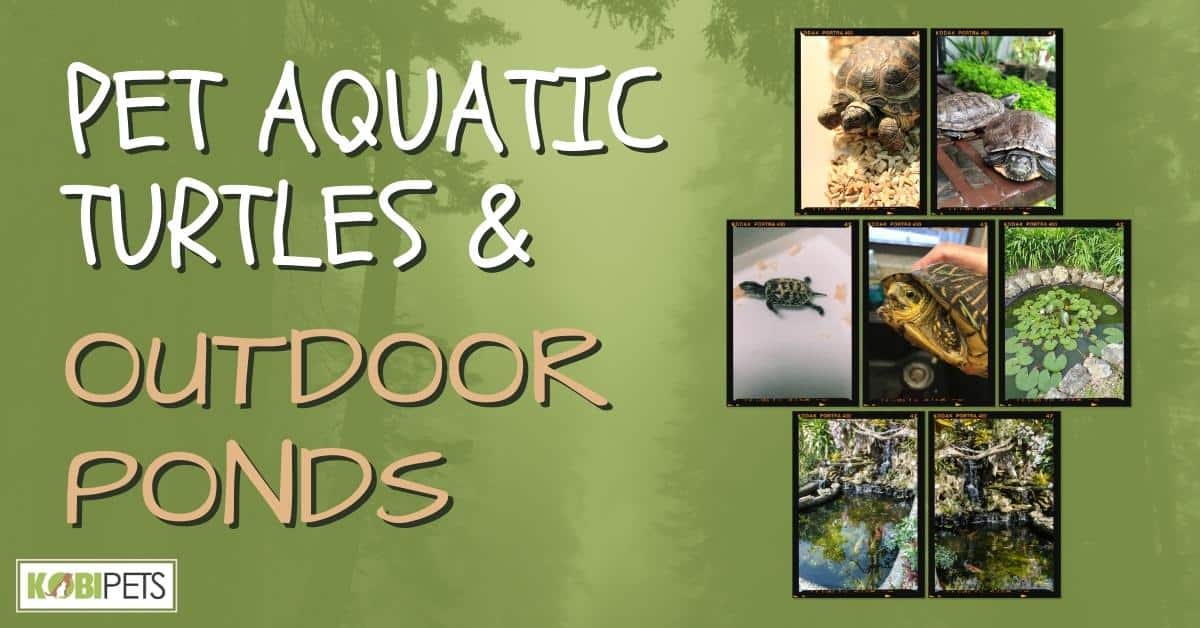
Pet Aquatic Turtles make great additions to any home, and having an outdoor pond can enhance the care and maintenance of these amazing pets.
An indoor aquatic turtle habitat should be large enough for the turtle to move around comfortably, as well as include a basking area, filter system, rocks or logs for exploration, and plenty of food. Additionally, it’s important to keep their tank clean and provide them with a variety of foods so they can get all the necessary nutrition.
Choosing the Right Species of Aquatic Turtle
Choosing the right species of aquatic turtle is an important step in ensuring that you provide your pet with the best possible care. There are several species of aquatic turtles, each with unique characteristics, requirements, and personality traits.
One of the most important factors to consider when choosing a species of aquatic turtle is the size of the turtle. Some species, such as the red-eared slider, can grow up to 12 inches in length, while others, like the musk turtle, only reach about 4 inches in length.
It’s important to consider the size of your living space and the size of the habitat you plan to provide for your pet turtle.
Another important factor to consider is the turtle’s diet. Some species of aquatic turtles are strictly herbivores, while others are omnivores or carnivores. You’ll need to choose a species that fits with the type of diet you are willing and able to provide.
Personality traits are also important to consider when choosing an aquatic turtle species.
Some species are more active and social than others and may require more attention and interaction from their owners. Others may be more shy or independent and may be content with less interaction.
Some of the most popular species of aquatic turtles for pets include the red-eared slider, the painted turtle, the musk turtle, the map turtle, and the diamondback terrapin.
Each of these species has its own unique characteristics and requirements, so it’s important to do your research before making a decision.
In addition to considering the species of turtle, it’s important to choose a healthy individual. Look for a turtle with clear, bright eyes, clean skin, and a smooth shell. Avoid turtles with swollen or runny eyes, lethargy, or any signs of illness.
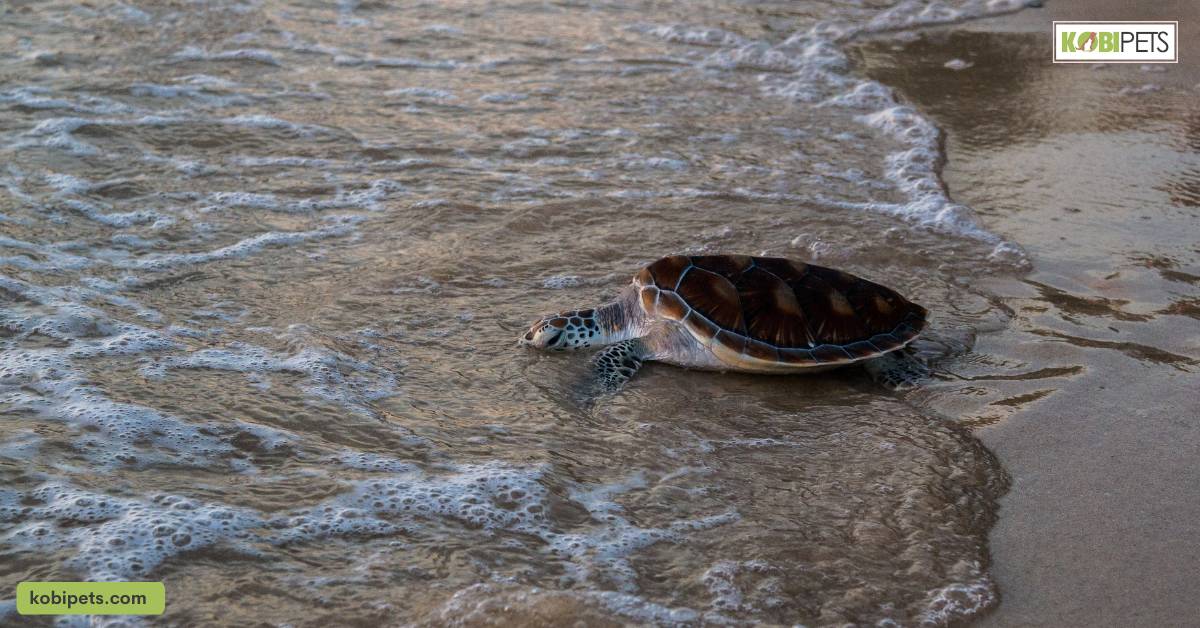
Setting up an Indoor Aquatic Turtle Habitat
If you are considering getting a pet aquatic turtle, it is important to know how to properly set up an indoor aquatic turtle habitat. A fish tank may not be the best option for your pet turtle, as they need a dry area and access to land.
An indoor aquatic turtle habitat can provide your pet with the necessary environment and space they need to thrive.
When setting up an indoor aquatic turtle habitat, there are several things you should consider. First, make sure that the enclosure is large enough for your pet turtle to move around comfortably.
You will also need to provide them with a basking area where they can get out of the water and warm up in the sun or under a heat lamp. Additionally, you should include some rocks or logs for them to climb on and explore.
You will also need to install a filter system in order to keep the water clean and free from bacteria and other contaminants. It is important that you change the water regularly so that your pet can stay healthy and happy.
Finally, make sure that you have plenty of food available for your pet so that they can get all of their nutritional needs met.
Setting up an indoor aquatic turtle habitat does require some work but it is worth it when you see how much joy it brings your pet!
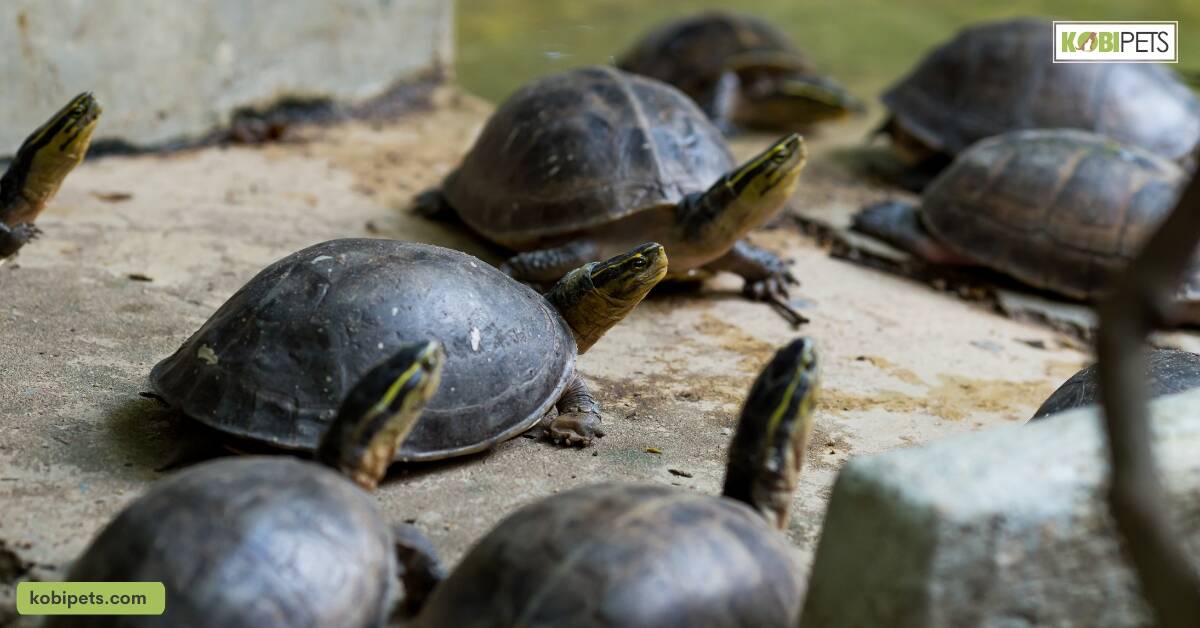
Feeding and Care for Pet Aquatic Turtles
Taking care of pet aquatic turtles is an important part of owning a turtle. It’s important to understand the basics of feeding and caring for your pet turtle in order to ensure it lives a long, healthy life.
Turtles are omnivores, meaning they eat both meat and plants. A good diet for aquatic turtles should include commercial turtle or fish pellets, as well as a variety of invertebrates and vertebrates such as crickets, mealworms, waxworms, or feeder fish.
Leafy greens and fruit can also be included in their diet. Hatchlings and small turtles, they should be fed daily. Clean out any uneaten food after 15 minutes to limit water contamination.
In addition to feeding your pet turtle regularly, it’s important to keep its tank clean by regularly changing the water and cleaning the substrate. The size of the tank will depend on the size of your turtle; larger tanks are recommended for larger turtles.
Consider having a separate feeding tank so that you can easily remove any uneaten food without having to clean the entire tank every day.
Finally, it’s important to provide your pet turtle with plenty of places to hide and explore in its tank; this will help keep it stimulated mentally and physically. With proper care and attention, your pet aquatic turtle can live a long life!
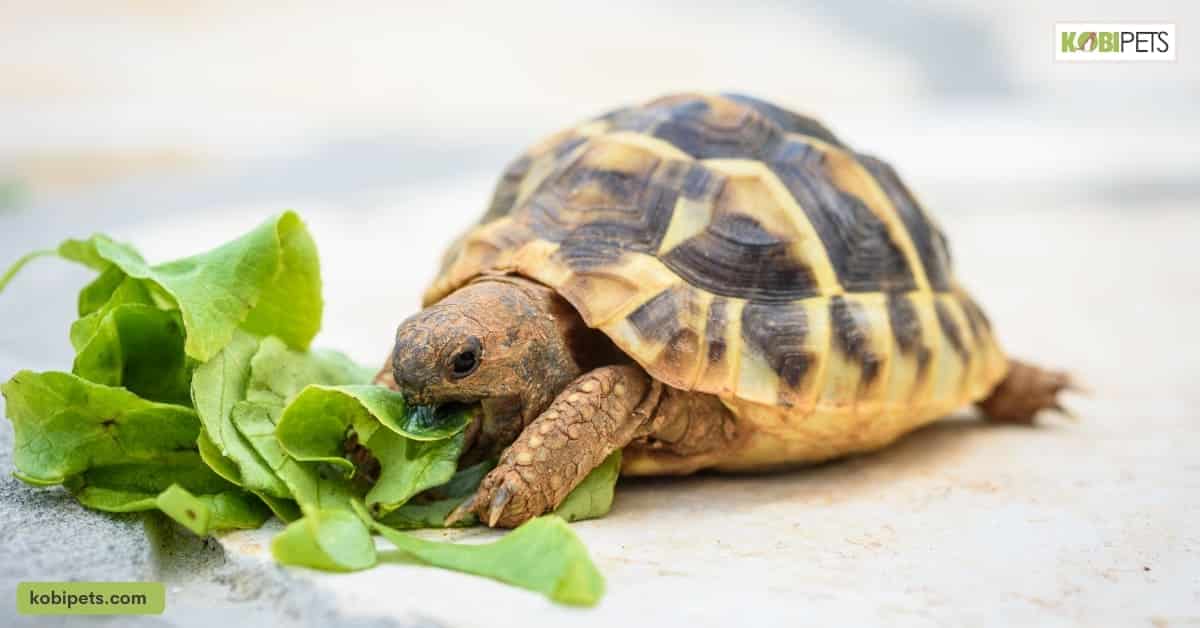
Common Health Issues in Pet Aquatic Turtles and How to Prevent Them
Pet aquatic turtles can be a great addition to any outdoor pond, but it is important to be aware of the potential health issues that can arise. Common health issues in pet aquatic turtles include cystic calculi, prolapses, irregular shell growth, shell fractures or trauma, algae on the shell, skin, and shell sloughing, and salmonella.
Respiratory infections are also common in pet aquatic turtles. Symptoms of respiratory infection include loss of appetite, lethargy, buoyancy problems (floating sideways), swollen eyes, and a runny nose.
Mouth rot is another common issue with pet aquatic turtles. It is usually caused by poor water quality or improper diet. Signs of mouth rot include discoloration of the mouth area, swelling around the jawline, and pus-like discharge from the mouth.
In addition to these health issues, pet aquatic turtles can also carry germs such as Salmonella which can make people sick if they come into contact with them or their tank water.
To prevent these health issues and germs from spreading it is important to keep your turtle’s tank clean and provide them with a healthy diet.
It is also important to wash your hands after handling your turtle or its tank water to avoid getting sick from Salmonella or other germs they may carry.
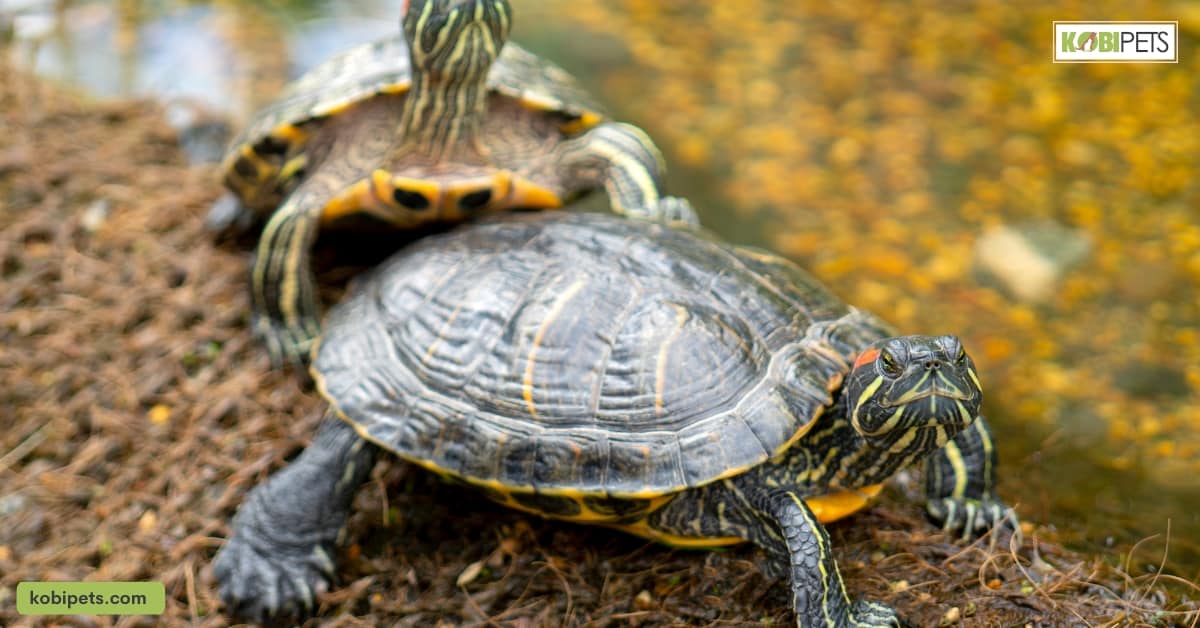
Building an Outdoor Pond for Aquatic Turtles
Building an outdoor pond for aquatic turtles can be a rewarding and enriching experience for both you and your pets. However, it is important to plan and prepare carefully to ensure the safety and health of your turtles.
First, you’ll need to choose the right location for your pond. It should be situated in a place that receives at least six hours of sunlight each day but is also protected from strong winds and extreme temperatures.
It’s also important to make sure the area is safe from predators, such as raccoons or cats, that may try to harm your turtles.
Once you’ve chosen a location, you’ll need to decide on the size and shape of your pond. The size of your pond will depend on the number of turtles you plan to keep, as well as their size and requirements.
A good rule of thumb is to provide at least 10 gallons of water per inch of turtle.
The shape of your pond can be whatever you like, but it’s important to include areas of shallow water, as well as deeper areas for swimming and diving.
You can also add a basking area, such as a rock or log, for your turtles to rest and sun themselves.
Next, you’ll need to excavate the area for your pond and line it with a pond liner or other waterproof material. It’s important to make sure the liner is secure and free from any wrinkles or folds that could cause leaks.
Once the pond is lined, you’ll need to fill it with water and add a filtration system to keep the water clean and clear.
You can also add plants, rocks, and other decorations to create a natural and stimulating environment for your turtles.
Finally, it’s important to monitor the temperature and quality of the water in your pond, as well as regular cleaning and maintaining the filtration system. You should also provide a sheltered area for your turtles to retreat to in case of extreme weather or temperatures.
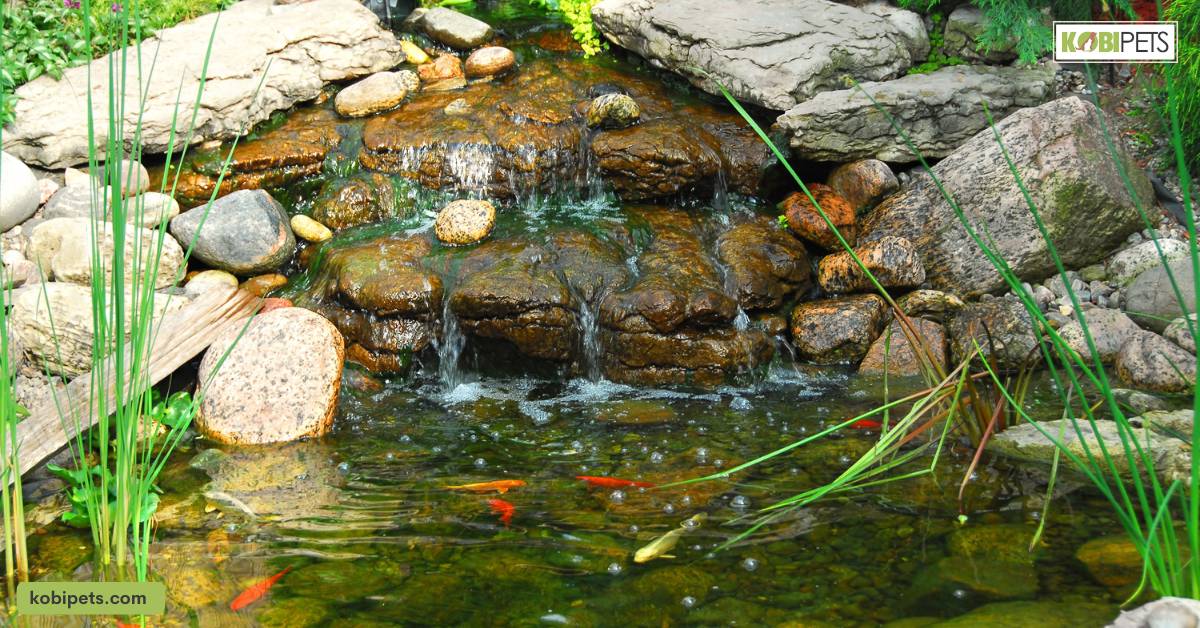
Creating a Natural Environment for Your Pet Aquatic Turtles
Aquatic turtles are a popular pet choice, and many people choose to keep them in outdoor ponds. An outdoor pond offers a more natural habitat for the turtle and can be the best way to house aquatic pond turtles year around given your turtle’s species can adapt to your geographical region.
When creating an outdoor pond for your pet aquatic turtles, it is important to consider the depth of the water. Red-eared sliders are a very aquatic species, which means they love to spend their time swimming.
The ideal depth of water should be at least 18 inches deep, with some areas reaching up to 3 feet deep. This will give your turtle plenty of room to swim and explore its environment.
You may also want to consider adding plants or rocks into the pond as well as providing places for your turtle to hide or bask in the sun. This will create a more natural environment for your pet and help keep them healthy and happy.
Additionally, you may want to add other animals such as fish or frogs into the pond so that your turtle has companionship while living in its new home.
Overall, when creating an outdoor pond for your pet aquatic turtles, it is important to provide them with a safe and natural environment in which they can thrive. With proper care and maintenance, you can ensure that your pet will have a long and healthy life in its new home!
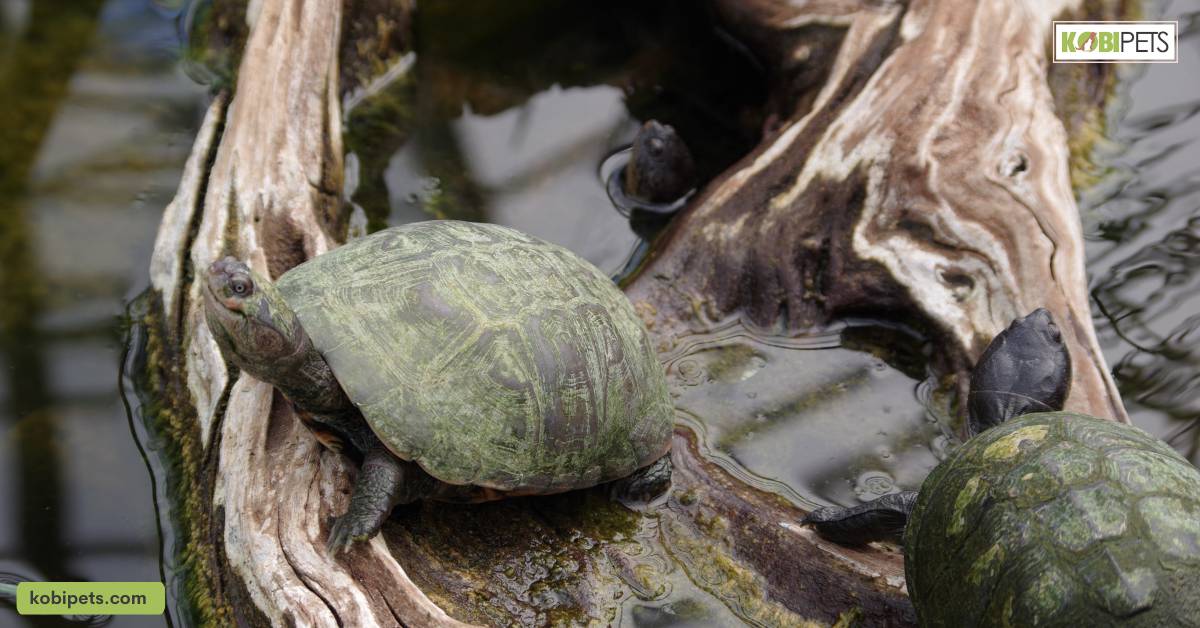
Maintenance and Care for Outdoor Turtle Ponds
Maintenance and care for outdoor turtle ponds are essential to ensure the health and well-being of your pet turtles. Here are some important tips for keeping your outdoor turtle pond clean and healthy:
- Water Quality: Regularly check the quality of your pond water, including pH levels, temperature, and ammonia levels. A filtration system, such as a pump and filter, is necessary to keep the water clean and clear. Additionally, you may want to add beneficial bacteria to help break down waste and keep the water clean.
- Feeding: Only feed your turtles as much as they can eat in a few minutes to avoid overfeeding and polluting the water. Remove any uneaten food as soon as possible.
- Cleaning: Regularly remove any debris or waste from the pond, such as uneaten food or turtle feces. It’s also important to clean the filter regularly, as it can become clogged and ineffective if left uncleaned.
- Water Changes: Regular water changes are necessary to maintain a healthy environment for your turtles. Depending on the size of your pond and the number of turtles you have, you may need to change 10-20% of the water every week or two.
- Temperature Control: Ensure the water temperature is suitable for your turtle species. Some turtles require water temperatures of 75-80°F, while others prefer cooler water. You can use a pond heater or shade the pond to help control the temperature.
- Disease Prevention: Keep an eye out for any signs of illness in your turtles, such as lethargy, loss of appetite, or unusual behavior. Quarantine any sick turtles and seek veterinary care if necessary. You can also use a water conditioner to help prevent the spread of disease.
- Winter Preparation: Depending on your location, you may need to prepare your pond for winter. This may include adding a pond de-icer to prevent the water from freezing or moving your turtles indoors for the winter.
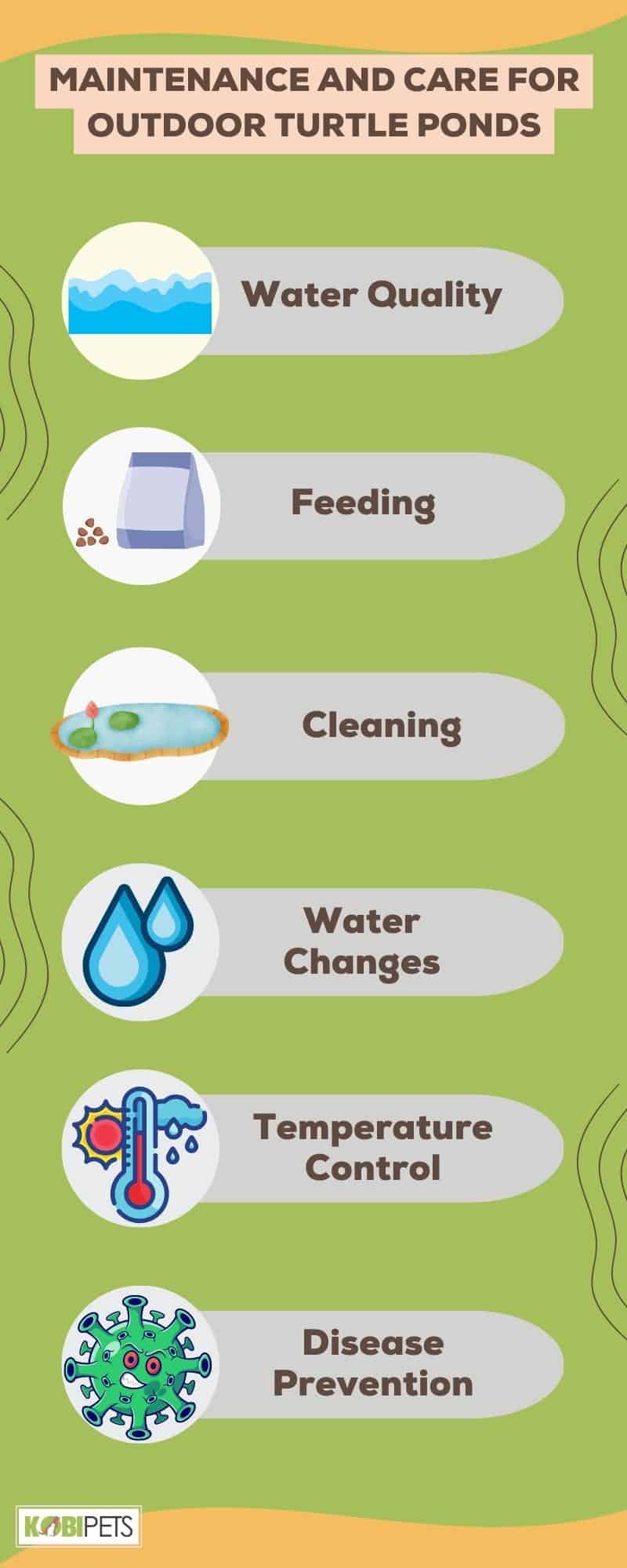
Maintenance and Care for Outdoor Turtle Ponds
Potential Dangers and Risks Associated with Outdoor Turtle Ponds
Outdoor turtle ponds can be a great addition to any backyard, but they also come with potential dangers and risks that must be taken into consideration. The most important risk is the potential for predators such as raccoons, cats, dogs, or other animals to enter the pond and harm your turtles. To protect against this, it is important to have secure fencing around the pond that is at least two to three feet high. Additionally, if you are keeping aquatic turtles in an outdoor pond, they should be at least 200 gallons in size to provide enough space for them to swim and bask.
Another potential danger of outdoor turtle ponds is the risk of parasites or diseases entering the pond from wild animals or other sources. It is important to regularly clean and maintain your pond by removing any debris or organic matter that could harbor parasites or bacteria. Additionally, it is recommended to treat your pond with a de-chlorinator on a regular basis.
Finally, if you are planning on hibernating your turtles outside in a pond during colder months, you will need to ensure that the water does not freeze completely as this can cause serious health issues for your turtles. You can use a submersible heater in the winter months to keep the water temperature above freezing.
Overall, outdoor turtle ponds can be a great way to provide your pet turtles with an enriching environment; however, there are some potential dangers and risks associated with them that must be taken into consideration before setting up one in your backyard.
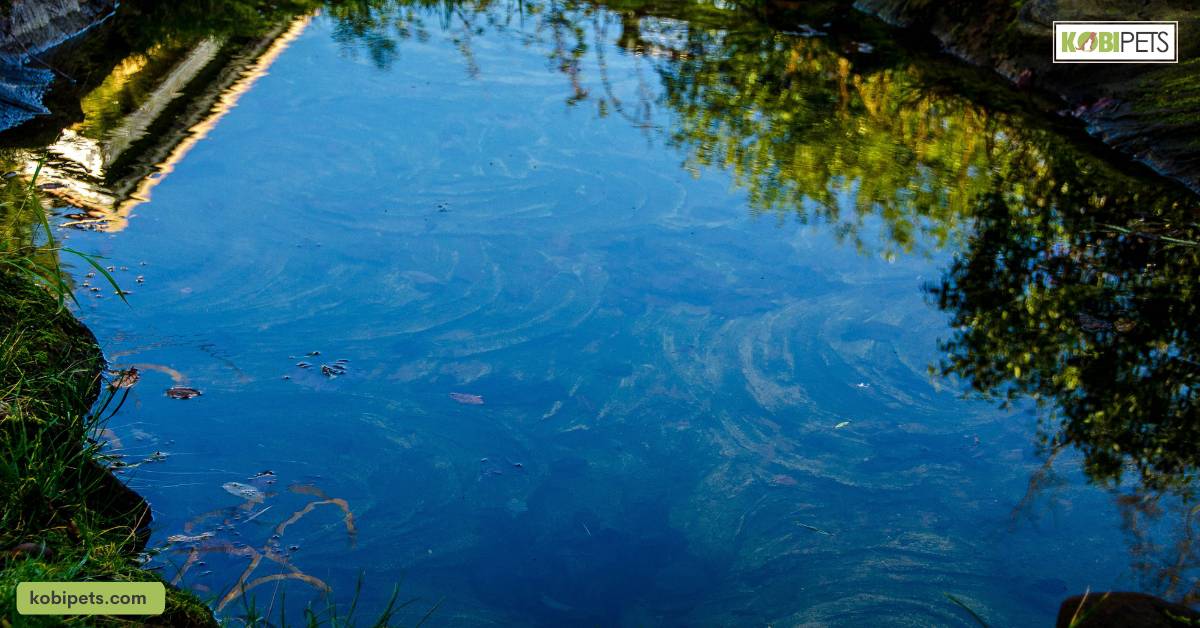
In conclusion
For a unique and enjoyable pet experience, no other animal can quite compare with Pet Aquatic Turtles. Their peaceful and whimsical nature makes them great companions, while their needs are reasonable and easy to manage.
Creating an outdoor pond provides the perfect solution for keeping aquatic turtles safe and healthy while allowing plenty of room to explore and swim.
With some basic preparation – such as providing hiding spots, maintaining oxygen levels through filters or water changes, and offering clean food – owners will find that these reptiles provide more pleasure than they could have ever imagined.






